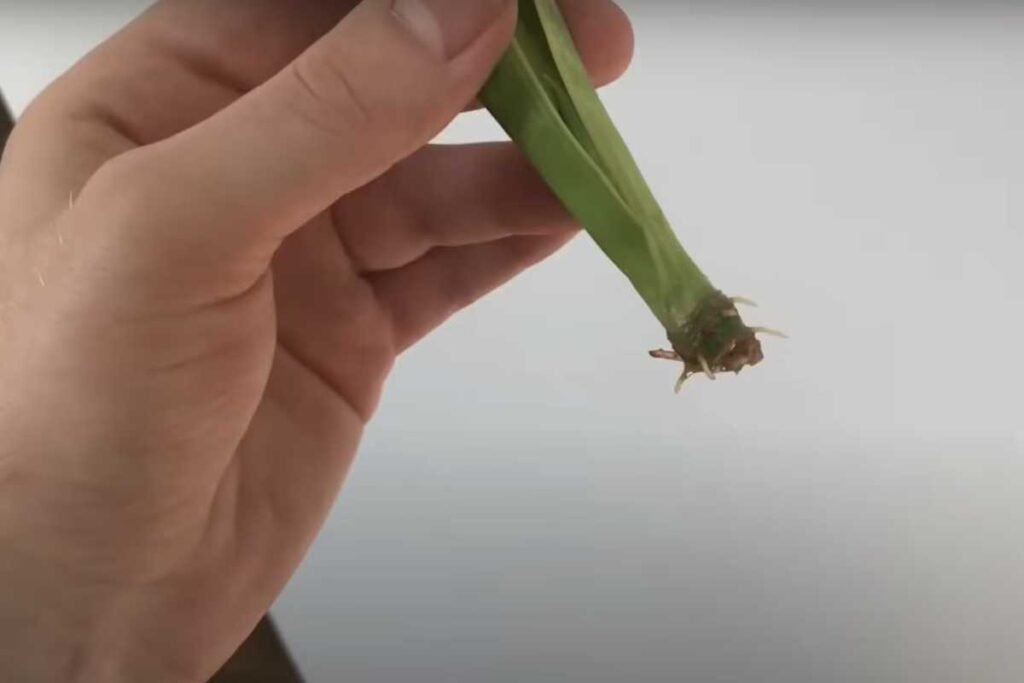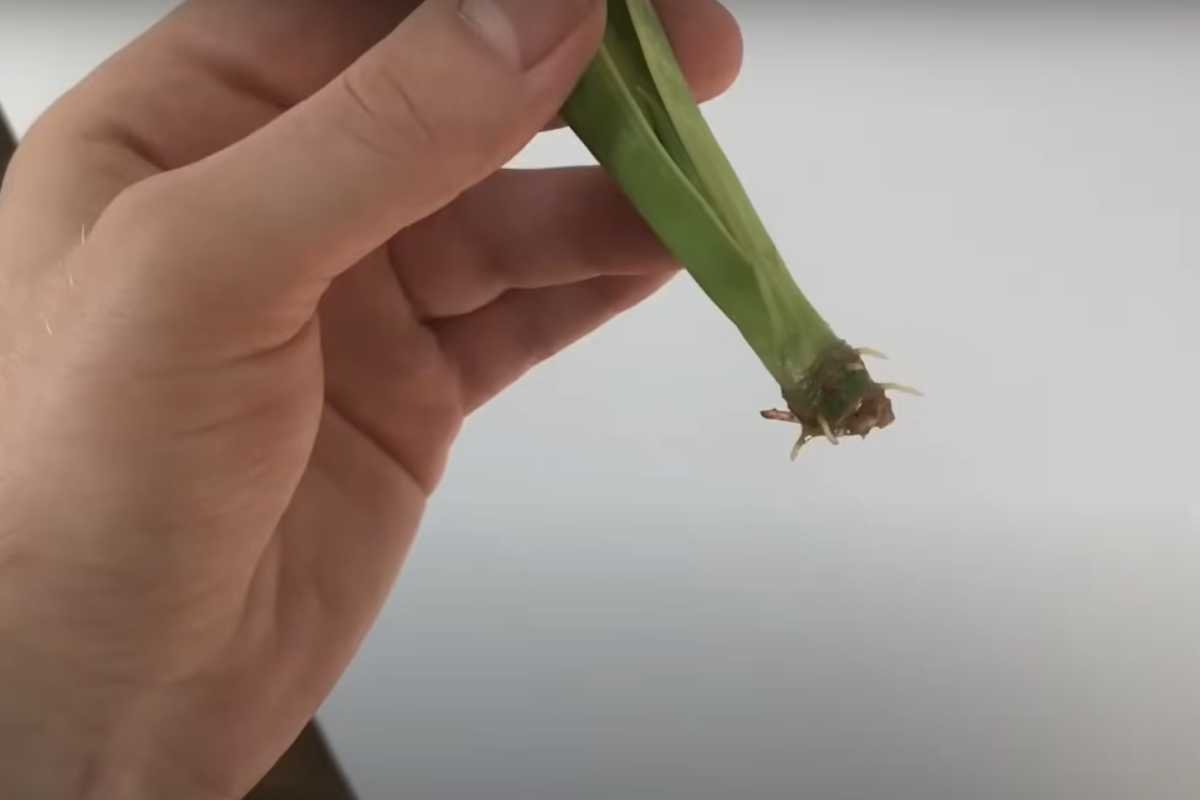Snake plants (Sansevieria trifasciata), also known as mother-in-law’s tongue, are popular houseplants due to their resilience and low-maintenance nature.
However, even these hardy plants are not immune to certain problems, and one of the most significant issues they face is root rot.
Snake plant root rot is a potentially fatal condition that can quickly deteriorate a healthy plant, leading to its eventual death if not diagnosed and treated promptly.
This comprehensive guide will delve deep into the causes, symptoms, prevention, and treatment of snake plant root rot.
Whether you’re a novice plant owner or an experienced horticulturist, understanding this problem is crucial for maintaining the health of your snake plant.
Table of Contents
What is Snake Plant Root Rot?
Root rot is a condition that primarily affects the roots of plants, causing them to decay and die. It is often caused by overwatering or poor drainage, leading to the development of fungal infections in the plant’s root system.
In snake plants, root rot is particularly devastating because it often goes unnoticed until the plant is significantly affected.
Root rot in snake plants occurs when the roots are unable to absorb oxygen properly due to prolonged exposure to waterlogged soil.
This lack of oxygen creates an ideal environment for harmful pathogens, particularly fungi such as Pythium and Phytophthora, to thrive and attack the roots.
As the roots decay, the plant’s ability to take in water and nutrients is compromised, leading to wilting, yellowing, and eventual death.
The Importance of the Root System in Snake Plants
Before diving deeper into the problem of root rot, it’s essential to understand the critical role that roots play in the overall health of a snake plant:
- Nutrient Absorption: Roots absorb essential nutrients and minerals from the soil, which are vital for the plant’s growth and development.
- Water Absorption: Roots take up water from the soil, which is necessary for photosynthesis and maintaining the plant’s structure.
- Anchorage: Roots provide stability and anchorage for the plant, ensuring it remains upright.
- Storage: In some plants, including snake plants, the roots also store food and water, helping the plant survive during periods of drought or stress.
When the root system is compromised by rot, the entire plant suffers. This is why early detection and treatment of root rot are crucial.

Causes of Root Rot in Snake Plants
Root rot is primarily caused by poor growing conditions. The two most common factors that contribute to root rot in snake plants are overwatering and poor drainage, though other environmental and biological factors can also play a role.
1. Overwatering
Snake plants are highly drought-tolerant and require infrequent watering. In their natural habitat, they thrive in dry, arid regions where water is scarce.
Overwatering is the most common mistake snake plant owners make, leading to waterlogged soil. Snake plants only need to be watered when the top few inches of soil are completely dry.
When overwatered, the soil becomes soggy, depriving the roots of oxygen and creating an environment where fungi can thrive.
Why Overwatering is Harmful:
- Oxygen Deprivation: Roots need oxygen to function properly. When soil is saturated with water, it becomes compacted, preventing air from reaching the roots.
- Fungal Growth: Waterlogged soil is a breeding ground for fungal pathogens, especially those that cause root rot.
- Root Suffocation: Prolonged exposure to excess moisture causes the roots to suffocate, making them more susceptible to fungal infections.
2. Poor Drainage
Even if you’re watering your snake plant correctly, poor drainage can still lead to root rot. Snake plants prefer well-draining soil that allows excess water to escape quickly.
If the soil is too compact or the pot lacks drainage holes, water will accumulate at the bottom, leading to soggy soil conditions and root rot.
Signs of Poor Drainage:
- Water pooling on the surface of the soil: This indicates that the soil is not absorbing water properly.
- Soil remains wet for extended periods: Well-draining soil should dry out within a week or so after watering. If it stays wet for too long, it indicates poor drainage.
- Lack of drainage holes in the pot: Ensure that the pot you are using has sufficient drainage holes to allow water to escape.
3. Improper Pot Size
Using a pot that is too large for your snake plant can also lead to root rot. A large pot holds more soil, and more soil retains more water.
When the plant’s root system is too small for the pot, it cannot absorb all the excess moisture, leading to waterlogged conditions.
4. Fungal Infections
Certain fungi, such as Pythium, Rhizoctonia, and Phytophthora, are responsible for causing root rot in snake plants.
These fungi are present in the soil and become active when conditions are favorable, such as in overly wet environments. Once they invade the plant’s root system, they can spread quickly, causing the roots to decay.
5. Cold Temperatures
Snake plants are sensitive to cold temperatures, especially when combined with excess moisture. Cold, damp conditions can weaken the plant’s root system and increase its susceptibility to root rot.
Ideally, snake plants should be kept in temperatures between 60°F to 80°F (15°C to 27°C). Prolonged exposure to temperatures below 50°F (10°C) can cause damage to the roots.
Symptoms of Root Rot in Snake Plants
Identifying root rot early is key to saving your snake plant. Unfortunately, the symptoms of root rot are often subtle and may be mistaken for other issues, such as overwatering or under-watering.
However, there are several telltale signs that can help you diagnose root rot:
1. Yellowing Leaves
One of the first symptoms of root rot is the yellowing of leaves. As the roots become unable to absorb water and nutrients properly, the plant’s foliage starts to suffer.
You may notice that the lower leaves turn yellow first, while the upper leaves remain green. Over time, the yellowing spreads throughout the plant.
2. Soft or Mushy Leaves
In more advanced cases of root rot, the leaves of the snake plant may become soft and mushy to the touch.
This is a sign that the plant is not receiving adequate nutrients from the damaged roots, causing the leaves to break down.
3. Wilting
Even though the soil may be wet, a snake plant suffering from root rot will often exhibit signs of wilting.
This is because the decayed roots can no longer transport water to the rest of the plant. As a result, the leaves may droop or become limp.
4. Brown or Black Roots
Healthy snake plant roots should be firm and white or light-colored. If you suspect root rot, gently remove the plant from its pot and inspect the roots.
Diseased roots will appear brown or black, and they may feel soft or mushy. In severe cases, the roots may have a foul smell due to bacterial decay.
5. Stunted Growth
Root rot affects the plant’s ability to absorb nutrients and water, which can lead to stunted growth.
If your snake plant is not producing new leaves or seems to be growing more slowly than usual, root rot may be the underlying issue.
Diagnosing Root Rot in Snake Plants
Diagnosing root rot in snake plants requires close observation and examination of the plant’s root system. If you notice any of the symptoms mentioned above, it’s time to take action.
Step-by-Step Guide to Diagnosing Root Rot:
- Remove the Plant from the Pot: Gently remove your snake plant from its pot to inspect the root system. Be careful not to damage the roots while doing so.
- Inspect the Roots: Healthy roots should be white or light-colored and firm to the touch. If you see brown, black, or mushy roots, your plant is suffering from root rot.
- Smell the Roots: In severe cases of root rot, the roots may emit a foul, musty odor due to bacterial or fungal decay. This smell is a clear indicator of root rot.
- Check the Soil: If the soil is waterlogged or stays wet for too long after watering, it is likely contributing to the root rot problem.
Treating Snake Plant Root Rot
Once you’ve diagnosed root rot in your snake plant, immediate treatment is essential to prevent the problem from worsening.
While root rot can be challenging to reverse, it is possible to save your snake plant if you act quickly.
1. Remove the Affected Roots
The first step in treating root rot is to remove the damaged roots. Use clean, sterilized scissors or pruning shears to cut away any brown, black, or mushy roots.
Be sure to remove all affected areas, as any remaining diseased roots can continue to spread the rot.
2. Repot the Plant
After removing the damaged roots, it’s important to repot your snake plant in fresh, well-draining soil. Follow these steps to repot your plant:
- Choose the Right Pot: Select a pot with drainage holes to prevent water from pooling at the bottom. Avoid using a pot that is too large, as excess soil will retain more moisture.
- Use Well-Draining Soil: Opt for a potting mix designed for succulents or cacti, as these mixes are formulated to drain quickly. You can also create your own mix by combining regular potting soil with perlite or sand to improve drainage.
- Repot Carefully: Place the snake plant in the new pot, making sure the roots are spread out and not compacted. Fill the pot with soil, leaving enough space at the top for watering.
3. Allow the Plant to Dry Out
After repotting, allow your snake plant to dry out before watering it again. This gives the roots time to recover and prevents further waterlogging.
Snake plants prefer to be kept on the dry side, so avoid watering until the top few inches of soil are completely dry.
4. Use Fungicides (Optional)
In some cases, applying a fungicide may help prevent the recurrence of root rot. Look for a fungicide that is specifically designed to treat root rot caused by fungal pathogens.
Follow the instructions carefully, and apply the fungicide to the affected areas as needed.
5. Monitor for Recovery
After repotting and treating your snake plant, monitor it closely for signs of recovery. Healthy new growth is a good indicator that the plant is bouncing back.
Be patient, as it may take several weeks or even months for the plant to fully recover from root rot.
Preventing Root Rot in Snake Plants
Preventing root rot is much easier than treating it, and there are several steps you can take to ensure your snake plant stays healthy.
1. Water Properly
The most important factor in preventing root rot is proper watering. Snake plants prefer to be watered infrequently, and they thrive in dry conditions.
Only water your snake plant when the top 2-3 inches of soil are completely dry. In the winter months, you may need to water even less frequently, as the plant’s growth slows down.
Read: Snake Plant Winter Care: A In-Depth Guide.
2. Use Well-Draining Soil
As mentioned earlier, well-draining soil is crucial for preventing root rot. Choose a potting mix that is designed for succulents or cacti, or create your own by adding perlite or sand to regular potting soil.
This ensures that excess water drains quickly and doesn’t accumulate around the roots.
3. Choose the Right Pot
Always use a pot with drainage holes to allow excess water to escape. Avoid using pots that are too large, as they will retain more moisture, increasing the risk of root rot.
If you’re using a decorative pot without drainage holes, consider placing a smaller pot inside it to catch excess water.
4. Monitor Temperature and Humidity
Snake plants prefer warm, dry conditions. Keep your plant in a location with temperatures between 60°F and 80°F (15°C to 27°C).
Avoid placing your snake plant in areas with high humidity, as this can increase the risk of overwatering and root rot.
5. Avoid Overcrowding
Ensure that your snake plant is not overcrowded in its pot. If the plant becomes too large for the pot, consider dividing it or repotting it into a larger container.
Overcrowded plants can trap moisture around the roots, leading to rot.
Related FAQs:
1. What causes root rot in snake plants?
Root rot in snake plants is primarily caused by overwatering and poor drainage. When the plant’s roots are exposed to waterlogged soil for an extended period, they become deprived of oxygen, which creates an ideal environment for fungal infections.
These fungi, such as Pythium and Phytophthora, attack the roots, causing them to decay.
2. Can a snake plant recover from root rot?
Yes, a snake plant can recover from root rot if it’s diagnosed and treated early. The damaged roots need to be trimmed away, and the plant should be repotted in fresh, well-draining soil.
Additionally, it’s important to allow the plant to dry out between waterings and monitor its recovery over time.
3. How can I tell if my snake plant has root rot?
Signs of root rot in snake plants include yellowing leaves, soft or mushy leaves, wilting despite moist soil, and stunted growth.
To confirm root rot, carefully remove the plant from its pot and inspect the roots. Healthy roots are white and firm, while diseased roots will appear brown or black, mushy, and may emit a foul odor.
4. How often should I water my snake plant to avoid root rot?
Snake plants should be watered only when the top 2-3 inches of soil are completely dry. Overwatering is a major cause of root rot, so it’s important to let the soil dry out between waterings.
In general, watering once every 2-4 weeks is sufficient, depending on the season and environmental conditions.
5. What type of soil is best for preventing root rot in snake plants?
Well-draining soil is crucial to preventing root rot in snake plants. A potting mix designed for succulents or cacti is ideal, as it allows excess water to drain quickly.
You can also create your own mix by adding perlite or sand to regular potting soil.
6. Should I use a fungicide to treat root rot in my snake plant?
Using a fungicide can help prevent the recurrence of root rot caused by fungal pathogens. If the plant has already been affected by root rot, removing the damaged roots and repotting in fresh soil is the most effective treatment.
A fungicide can be applied as an additional measure, but it is not always necessary.
7. Why do the leaves of my snake plant turn yellow if it has root rot?
Yellowing leaves are a common symptom of root rot because the decayed roots can no longer effectively absorb water and nutrients from the soil.
As a result, the plant’s foliage starts to suffer, and the lower leaves typically turn yellow first.
8. Can root rot spread to other plants?
Yes, root rot can spread to other plants, especially if caused by fungal pathogens in the soil. Fungi such as Pythium and Phytophthora can move through the soil and infect neighboring plants.
To prevent the spread of root rot, isolate the affected plant and disinfect any tools or pots used for handling the infected plant.
9. How do I prevent root rot from happening again?
To prevent root rot, make sure your snake plant is in well-draining soil and a pot with drainage holes. Water the plant sparingly, only when the top few inches of soil are dry.
Avoid placing the plant in cold or humid environments, as these conditions can increase the likelihood of root rot.
10. What happens if I don’t treat root rot in my snake plant?
If left untreated, root rot will continue to spread, causing more roots to decay.
As the roots die, the plant will be unable to absorb water and nutrients, leading to more severe symptoms like wilting, yellowing, and eventually, death of the plant.
Conclusion
Root rot is a common yet preventable issue that affects snake plants. While the condition can be fatal if left untreated, early detection and proper care can save your plant.
By understanding the causes of root rot and following the preventive measures outlined in this guide, you can ensure that your snake plant remains healthy and thrives for years to come.
Remember to water your plant sparingly, use well-draining soil, and choose a pot with drainage holes to keep your snake plant’s roots happy and rot-free.
My name is Shahriar Robin, and my journey with plants began in childhood, igniting a lifelong passion that blossomed alongside my career as a nutritionist and sports trainer. Through SnakePlant.org, I channel this dedication, merging expertise from nutrition and sports training to nurture a platform sharing all-encompassing knowledge about Snake plants. This website mirrors my commitment to cultivating greenery, offering comprehensive insights on growth, maintenance, and nurturing practices for these captivating plants. My mission is rooted in leveraging diverse expertise to enhance plant care practices, believing profoundly in the therapeutic impact of nature. Join me on SnakePlant.org, where I unite a thriving community of enthusiasts, sharing experiences, insights, and the profound joys of planting.

